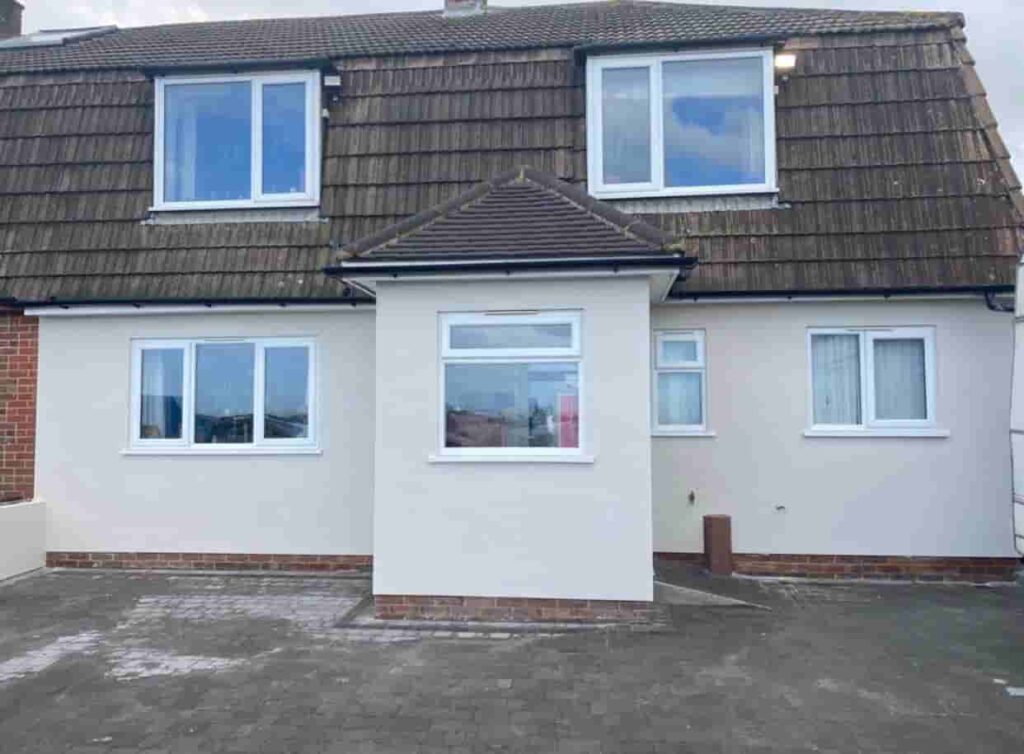Lead flashing is an essential component of any roofing system, providing a waterproof barrier at the junctions where the roof meets walls, chimneys, vents, and other structures. Despite its critical role, lead flashing can sometimes be overlooked during routine roof inspections, and small issues can quickly turn into significant problems. At Stafford Roofing Repairs, we understand the importance of properly maintaining lead flashing to prevent leaks and ensure the longevity of your roof. In this post, we’ll explore common lead flashing failures, how to identify them, and what steps can be taken to fix these problems.
What is Lead Flashing?
Lead flashing is a thin layer of lead that is installed at critical points on a roof to prevent water from entering the structure. It is most commonly used around chimneys, skylights, and where the roof meets vertical surfaces like walls. Lead is favoured for its durability, flexibility, and weather-resistant properties, but over time, even the best materials can fail without proper care.
Common Causes of Lead Flashing Failures
- Thermal Expansion and Contraction Lead flashing naturally expands and contracts with temperature changes. Over time, this movement can cause the flashing to crack or split, especially if it has been installed incorrectly or without proper allowance for movement. Once the flashing is damaged, it becomes ineffective at preventing water ingress.
- Poor Installation Incorrectly installed flashing is one of the leading causes of failure. Flashing that has been improperly sealed, poorly positioned, or secured using inadequate fixings is more likely to come loose or allow water to seep through. Inadequate overlaps or improper folds in the lead can also compromise its effectiveness.
- Weathering and Corrosion While lead is highly resistant to corrosion, prolonged exposure to harsh weather conditions can still lead to wear and tear. Acidic rain, extreme temperatures, and wind-driven debris can all contribute to the gradual breakdown of lead flashing, reducing its ability to provide a watertight seal.
- Physical Damage Debris from storms, high winds, or fallen branches can damage lead flashing, causing cracks or dislodging sections. Additionally, foot traffic from maintenance workers or DIY repairs can inadvertently damage the flashing, creating small vulnerabilities that lead to water ingress.
- Sealant Deterioration Over time, the sealant used around the edges of the lead flashing can degrade, leading to gaps where water can penetrate. This is particularly common in older roofs, where sealants may have been exposed to decades of weathering.
Identifying Lead Flashing Problems
It’s essential to regularly inspect your roof for signs of flashing failure. Here are some common indicators that your lead flashing may be compromised:
- Water Stains on Walls or Ceilings One of the most obvious signs of lead flashing failure is water damage inside your home. If you notice damp patches, water stains, or peeling paint on your walls or ceilings, it could be due to water entering through faulty flashing.
- Visible Cracks or Gaps Inspect your roof for any visible cracks or gaps in the flashing, especially around chimneys, vents, or where the roof meets a wall. If the flashing appears loose or damaged, it’s likely not providing adequate protection.
- Rust or Corrosion While lead itself doesn’t rust, other metal components used in the installation may corrode over time. Look for signs of rust or corrosion around the flashing, as this could indicate underlying issues.
- Loose or Missing Sections Flashing that has become dislodged or is missing entirely will need immediate attention. Loose flashing is ineffective and can lead to significant water damage if left unchecked.
- Moss or Algae Growth The presence of moss or algae around the flashing may indicate water is not draining properly, which could be a sign of a flashing problem. These growths can retain moisture and accelerate the deterioration of both the flashing and the roof.
How to Fix Lead Flashing Failures
At Stafford Roofing Repairs, we offer expert solutions to address lead flashing failures. Here’s how we can help restore the integrity of your roof:
- Thorough Inspection The first step in fixing any lead flashing problem is a comprehensive inspection to identify the root cause of the failure. Our experienced team will examine your roof for signs of damage and provide a detailed assessment of the necessary repairs.
- Replacement or Repair of Damaged Flashing Depending on the extent of the damage, lead flashing can either be repaired or replaced entirely. For minor cracks or gaps, we can apply new sealant or patch the damaged sections. In more severe cases, we will replace the flashing with high-quality materials to ensure long-term durability.
- Repointing Chimney Flashing For flashing around chimneys, repointing may be required if the mortar holding the flashing in place has deteriorated. Repointing ensures that the flashing is securely fastened and prevents water from seeping through the gaps.
- Correct Installation Techniques If poor installation was the cause of the failure, we will ensure that your new flashing is installed correctly, with proper overlaps, sealant application, and allowances for thermal movement. This ensures the flashing performs effectively in all weather conditions.
- Preventative Maintenance Regular roof maintenance is crucial for preventing future flashing failures. We recommend scheduling annual roof inspections to catch potential issues early and address them before they become major problems.
Conclusion
Lead flashing is a crucial element of any roofing system, protecting your home from water ingress at vulnerable junctions. However, lead flashing failures can go unnoticed until significant damage has occurred. At Stafford Roofing Repairs, we specialise in identifying and fixing flashing problems to ensure your roof remains watertight and secure. If you’ve noticed any signs of flashing failure, contact us today for a professional inspection and expert repair services in Stafford, Staffordshire.
Call us on: 01785 904 494
Click here to find out more about Stafford Roofing Repairs
Click here to complete our contact form and see how we can help with your roofing needs.

